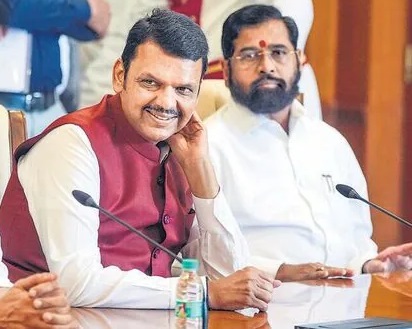By Sitaram Mewati
In a dramatic political development, Devendra Fadnavis has been sworn in as the Chief Minister of Maharashtra for the third time, marking his triumphant return to the state’s highest office. The Bharatiya Janata Party (BJP) leader’s comeback has reignited debates on governance, coalition dynamics, and the state’s political future.
Fadnavis, known for his efficient administration and ability to steer Maharashtra through challenging times, takes the reins at a critical juncture. The state faces multiple challenges, including economic recovery post-pandemic, infrastructure development, and addressing agrarian distress. Fadnavis’s proven track record during his earlier tenure, particularly in driving infrastructure projects like the Mumbai Metro and fostering an investor-friendly climate, has been a cornerstone of his political appeal.
His return was facilitated by a combination of strategic alliances and internal rifts within opposition parties. The Shiv Sena, Nationalist Congress Party (NCP), and Congress alliance, formed after the 2019 elections, experienced turbulence, paving the way for BJP’s resurgence. Fadnavis’s adeptness in navigating complex political landscapes was evident as he built coalitions and garnered support.
The new government has outlined its priorities, focusing on strengthening urban infrastructure, empowering farmers, and enhancing industrial growth. Fadnavis emphasized transparency, good governance, and development in his inaugural speech. He also addressed the need to tackle unemployment and improve healthcare access in rural areas.
While his supporters hail his leadership, critics point to the challenges of coalition management and delivering on ambitious promises. Opposition parties are expected to keep a vigilant watch, ensuring accountability.
Fadnavis’s return signifies a moment of both continuity and change for Maharashtra. As the state looks ahead, his ability to balance political dynamics with public expectations will determine the trajectory of his tenure.

Editor in Chief : Mewati SItaram











